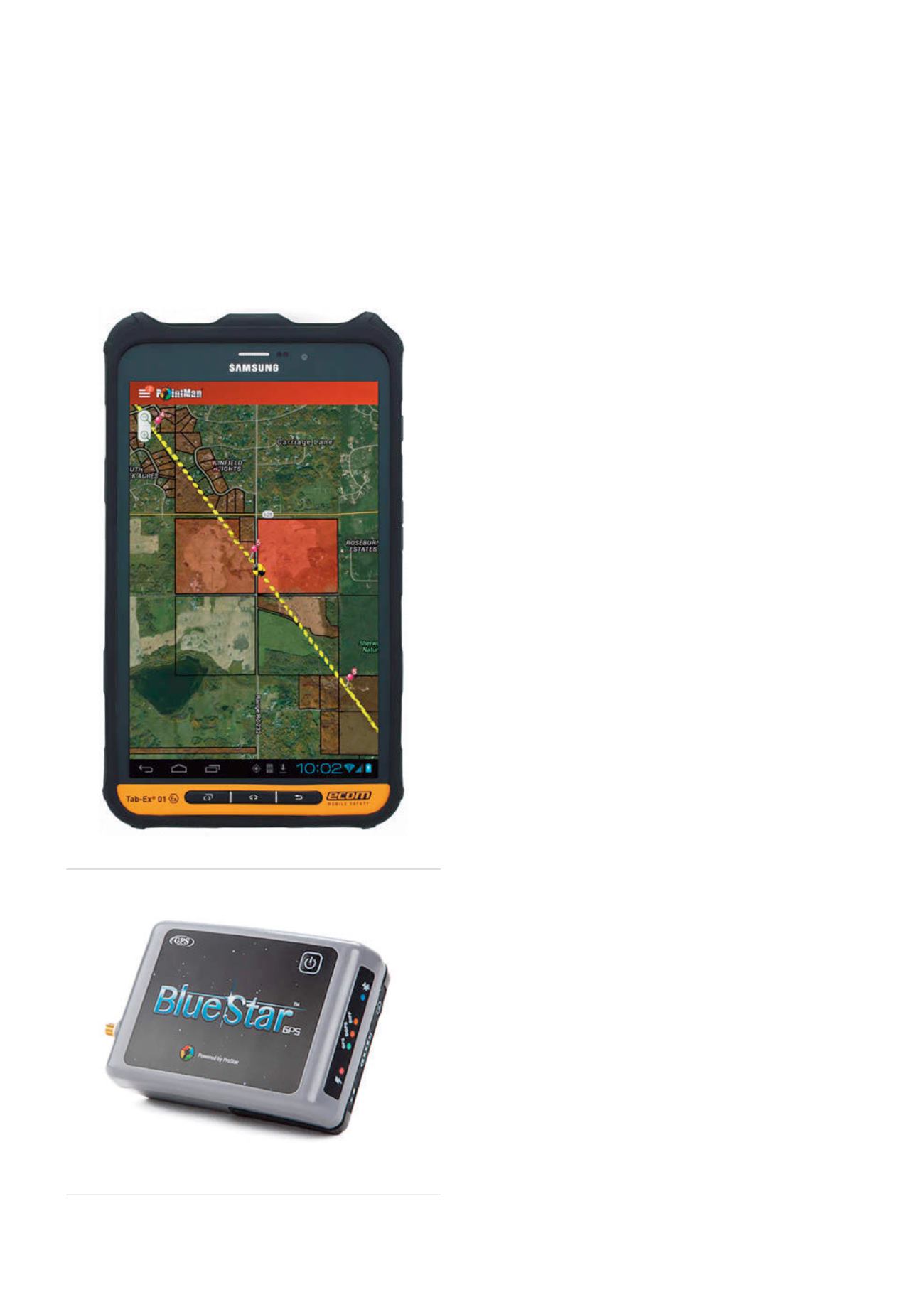
Big data systems, mobile, cloud and geospatial
technologies
There are now some early oil and gas industry adopters
that are using these emerging technologies to integrate
departmental silos and create seamless information flow
across various divisions and departments. They are capturing,
recording, qualifying and analysing large amounts of data very
quickly and displaying that information on familiar-looking
dashboards and smart mobile computing devices. This in
turn enables operations to be more effective and efficient
throughout the planning, design, installation and maintenance
lifecycle. It also better protects the asset and reduces
downtime and incidents often caused by a lack of accurate
and timely information.
Oil and gas operators have legitimate concerns over new
technologies. One concern that looms large is data security.
After all, we do not want others to have access to our data
for nefarious purposes, intentional or accidental. As such,
we tend to want to keep our data in-house, locked into file
cabinets and stored in on-premise servers over which we
have complete control. Sometimes we even keep it from the
people who could do their job functions better if they had
access to it when and where it was most needed.
However, we do not think twice about doing our
banking and investing from our mobile phones or our home
computers: these industries have invested heavily into very
robust and proven security protocols. We can now do the
same with oil and gas data. We are at a point where we
are able to confidently use the same military grade three-
part security sign-on and business privilege sign-in steps to
access the data we need to do our jobs, with a company
administrator controlling and assigning various user privileges
for that data, including a specific time and date, a defined
region or read/write or read only access.
Another concern for businesses is ‘the Cloud’. What
does it really mean to be in the Cloud? The Cloud is nothing
more than data storage and software on someone else’s
premises. Cloud servers have several advantages to enterprise
on-premise data and programme storage. Cloud computing
allows a company to utilise subscription-based methods
of computing, rather than license-based ones. Traditional
software license deployment requires IT departments to
be responsible for items such as databases, servers, server
hardware, networking, etc. With the software as a service
(SaaS) subscription model, an IT department can shift
responsibility and direct costs to the SaaS provider. The
benefits of the SaaS deployment model are time to market,
scalability, product ever-greening, and superior functionality
and flexibility to the business. This is the same model provided
by ‘SaaS’ business solution providers SAP and Salesforce.com,
whose applications are widely accepted and proven to be
efficient and scalable. Running in the Cloud gives you freedom
to adapt. Hardware resources are already setup and ready
to be deployed. Scaling is simplified because servers can be
allocated as the demand for services requires. Costs related
to maintenance, patches, upgrades, downtime, customisations,
integration and vendor-dependent software and application
changes/upgrades are also reduced. Cloud initiatives have
accelerated lightweight client access to powerful processing
services hosted at remote locations.
Innovative companies are developing new Cloud, mobile,
and geospatial technologies that enable lots of data to
be captured, stored, organised, and geo-referenced with
unprecedented confidence. Geographic information systems
(GIS) have of course been around for a long time. For many
years, we have been stuck with proprietary platforms that
cannot adapt quickly enough to our changing needs and data
Figure 1.
ecom/Samsung Rugged Tablet.
Figure 2.
BlueStarGPS Unit.
76
World Pipelines
/
JULY 2015


